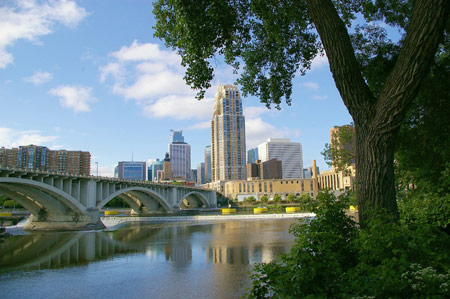
American Forests took on this project to help people (and city leaders) better understand the critical value of urban forests in their cities — to their own lives, health, economies and well-being of their communities. And to, therefore, invest in their urban forests. We see proactive individuals as a key to maintaining urban forests. These people recognize that trees around them are not just pretty shade providers, but are essential elements of the natural fabric of the planet that we depend upon for survival.
The 10 best cities that we are recognizing today have made prolonged and profound investments in the health of their urban forest, and they’ve benefited from active nonprofit and community participation in improving and maintaining the city’s environmental resources. We extol these cities’ efforts and dedication to urban forests to elevate the quality of life for citizens and visitors alike and hope that other cities will be inspired by their success.

I’d like to thank our expert panel, which included technical advisors from the U.S. Forest Service, who devoted hours of time to look at independent data and American Forests’ survey responses from local urban forest professionals and community forestry nonprofits in order to help determine our 10 best cities. And, of course, the Forest Service itself, which provided grant funding to support this project.
What did we learn? We thought we knew a lot about what urban forests do for people. What we learned was how innovative people are in working for the forests in their cities. Each one with similar and different problems, similar and different solutions. We hope the shared takeaways will create a basis for better understanding as to how to address the new challenges we face each day as climate change alters the timing of seasons, the frequency and severity of storms and the threats of disease and insect infestations that were previously checked by colder winters.
Over the years, science has increasingly shown that urban forests are so much more than a beautification strategy. Yet, we sometimes forget that these environments that do so much for us — removing carbon dioxide, controlling stormwater and flooding and providing restful, stress-reducing oases in the middle of urban life — cannot exist without our help. With 80 percent of the U.S. population currently living in urban areas and the urban land area in the U.S. expected to more than double by 2050, now is the time to plan, plant and foster our urban forests. Trees don’t grow up overnight, but a healthy urban forests’ benefits can be enjoyed by generations.